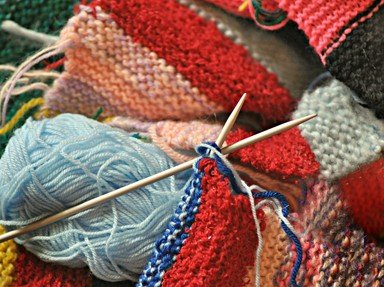Quiz Answer Key and Fun Facts
1. One of the earliest examples of a knit-like textile has been shown to be made using the nalbinding technique. Which of the following is true about nalbinding?
2. Where have some of the oldest intact examples of clothing made from nalbinding been found?
3. The first signs of true knitting (fabric made using two needles) are socks found in Egyptian tombs. What type of yarn is used for these socks?
4. Using multiple colours for knitted garments is quite popular today. Ancient multi-coloured knitted objects have also been found. The oldest known examples of multi-coloured knit clothing were produced during what historical age?
5. It has been common for knitting to appear in various different media over the years. Where did knitting start to appear in the mid-1300s?
6. Knitted caps seem to be the first article of clothing knit in Great Britain. What 1500s city was known for its knitted caps?
7. Historical evidence of knitting can be found in various written records in the 1500s and 1600s. In which of the following would you find references to knitting?
8. Families in fishing villages in Great Britain developed their own distinct cable-knit sweater patterns for their family members in the 1800s. What is one reason that each family had their own knit design for their fishermen?
9. Knitting machines were invented to make knitting easier and quicker. Who invented the first knitting machine?
10. Knitting for the "war effort" is when individuals knit clothing and make donations to help keep soldiers and/or sailors warm on the front. During which war did North American soldiers and/or sailors first experience the warmth of these donations from knitters?
11. World War One saw an explosion of charity knitting for soldiers overseas. Which of the following was not taught to knit for the cause?
12. Knitting for WWI soldiers was designed for both comfort and functionality. Which of the following patterns were not encouraged for soldiers?
13. Whose band had a popular knitting song in the 1940s called "Knit One, Purl Two"?
14. Although it is difficult to determine the exact reasons for the development of knitting, many believe that knitting has its roots in which of the following?
15. An early example of a hand-knitted item was found in a Spanish prince's tomb in 1945. What is this item?
Source: Author
Trivia_Fan54
This quiz was reviewed by FunTrivia editor
WesleyCrusher before going online.
Any errors found in FunTrivia content are routinely corrected through our feedback system.
